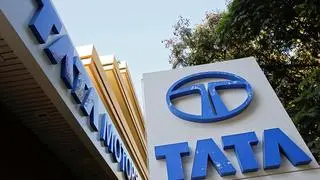For IDFC Bank, which was granted the universal bank licence, the journey of transitioning into a bank has not been a bed of roses. But this was only expected, given the costs involved in meeting the statutory requirements of a bank and branch expansion, and the intensively competitive turf.
Against this backdrop, IDFC Bank evaluating the possibility of merger with Shriram Group’s Shriram City Union Finance, for the purpose of expanding its retail focus, is understandable. But the merger is not devoid of challenges.
Apart from facing regulatory hurdles (HDFC Life and Max Life being a case in point), integrating diverse businesses and meeting regulatory requirements will not be easy.
Given that the contours of the deal will take time to finalise, investors should avoid taking fresh exposure in both stocks. Existing investors can consider booking profits partially, at every rally, until the share swap ratio and other details are worked out in the next 90 days.
Shriram Transport Finance, the other NBFC within the Shriram Group, will continue as a standalone NBFC under IDFC Ltd. This move is welcome, as a merger into IDFC Bank would have meant further erosion of profitability. But given the challenges the company is currently facing, fresh exposure in the stock can be avoided. The management has indicated possibility of de-listing the company post-merger. Existing investors can hold the stock until contours of the possible de-listing are worked out.
Merger: What works?When IDFC Bank started its banking operations on October 1, 2015, its gross loan book stood at about ₹46,381 crore. In the latest March quarter, its outstanding credit stood at ₹85,172 crore. In a bid to build mass market focus, the bank, last year, acquired Grama Vidiyal Micro Finance (now renamed IDFC Bharat Ltd).
The merger of IDFC Bank with Shriram City Union can result in some synergies as far as building retail loan portfolio and deposit base goes.
Shifting its focus to the small loan segment (after the commercial vehicle financing business was merged with Shriram Transport Finance in 2004), Shriram City Union Finance has been able to mine its existing chit fund customer base for extending small business loans. About 54 per cent of Shriram City’s loan book comprises loans to small enterprises — the portfolio grew 20.9 per cent in FY17. Shriram City has also made use of opportunities in the two-wheeler and gold loan segments to build its retail presence.
The merger will give IDFC Bank access to the high-yielding retail portfolio. Currently 25 per cent of IDFC’s loan book (funded) is retail (₹16,818 crore). Shriram City’s assets under management stood at ₹23,132 crore as of March 2017.
On the liability side too, IDFC Bank can leverage the healthy deposit base of the NBFC. IDFC Bank has CASA deposit base of about ₹2,000 crore, just 5 per cent of its overall deposit base in FY17. Shriram City has been able to enjoy a good share of retail deposits thanks to its top-notch rating and attractive interest rates. As of FY17, retail FD constituted 19 per cent of the company’s borrowings. According to the company’s annual report, public deposits stood at over ₹3,500 crore as of FY17.
Merger: What doesn’tWhile synergies are apparent, integrating the diverse lending businesses will not be an easy task. IDFC Bank has been more focussed on urban markets (until its acquisition of Grama Vidiyal Micro Finance).
IDFC Bank’s profitability is already under pressure owing to regulatory costs and expenditure on building its retail side of the business. The benefit from leveraging Shriram City’s low-cost deposit base will be offset by the increased regulatory burden of maintaining cash reserve and statutory liquidity requirement on Shriram City’s funding base. A back-of-the-envelop calculation suggests a 70-80 basis points erosion in return ratios. IDFC Bank’s return on asset (ROA) stood at 1 per cent and return on equity (ROE) at 7.2 per cent in FY17. This is already lower than ROA and ROE of 1.8-2 per cent and 15-18 per cent, respectively, of leading private banks.
Post merger, returns of IDFC would come under further pressure, which could make it difficult for the combined entity to compete efficiently with other leading retail banks.
Asset quality pressureThe RBI in 2014 tightened the NPA recognition norms for NBFCs to bring them on a par with banks by March 2018. This has impacted Shriram City’s asset quality. From 3 per cent of loans in FY15 (when 180-day NPA norm was followed), GNPAs have gone up to 6.7 per cent in FY17 (150 days until third quarter of FY17 and 120 days from March 2017 quarter). With the norms tightened to 90 days by March 2018, earnings will come under further pressure.
IDFC Bank has been able to bring its GNPAs under control over the past year, primarily on account of sale of assets (14 accounts) worth around ₹2,000 crore to an Asset Reconstruction Company. GNPAs stood at 3 per cent of loans, as of March 2017, down from 6 per cent last year. But possible incremental slippages from the bank’s infrastructure book remains a concern.
The merged entity will have to grapple with asset quality concerns as well.








Comments
Comments have to be in English, and in full sentences. They cannot be abusive or personal. Please abide by our community guidelines for posting your comments.
We have migrated to a new commenting platform. If you are already a registered user of TheHindu Businessline and logged in, you may continue to engage with our articles. If you do not have an account please register and login to post comments. Users can access their older comments by logging into their accounts on Vuukle.